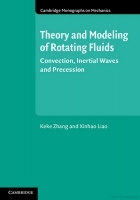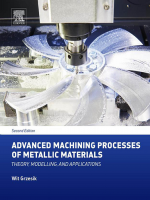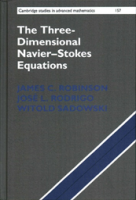Language of geometrical product specifications – a mysterious and unknown whether second native language of each engineer?
Język specyfikacji geometrii wyrobów – tajemniczy i nieznany czy drugi język ojczysty każdego inżyniera? *
Author: Zbigniew Humienny
Mechanik nr 07/2020 - Metrologia techniczna
ABSTRACT: The role of geometrical tolerances in ensuring compliance with the functional requirements defined for a product is shown. Directions of development of graphical geometrical product specification language, which is an important element of the ISO GPS system, are presented. The indicators given in the drawing of the disc with cylindrical and cuboid holes are analysed, and the need to use of modifiers is justified. Alternative modifiers are shown. It is explained when the position tolerance specifications should be considered separately, as combined or simultaneously.
KEYWORDS: dimensioning, tolerancing, geometrical tolerances, geometrical product specifications, GPS, TC 213, ISO 1101
STRESZCZENIE: Wyjaśniono rolę tolerancji geometrycznych w zapewnieniu spełnienia wymagań funkcjonalnych określonych dla wyrobu. Przedstawiono kierunki rozwoju graficznego języka specyfikacji geometrii wyrobów, będącego istotnym elementem systemu ISO GPS. Przeanalizowano oznaczenia użyte na rysunku tarczy z otworami walcowymi i prostopadłościennymi oraz uzasadniono potrzebę zastosowania modyfikatorów. Pokazano alternatywne modyfikatory. Wyjaśniano, kiedy specyfikacje tolerancji pozycji należy rozpatrywać niezależnie, łącznie albo równocześnie.
SŁOWA KLUCZOWE: wymiarowanie, tolerowanie, tolerancje geometryczne, specyfikacje geometrii wyrobów, GPS, TC 213, ISO 1101
BIBLIOGRAFIA / BIBLIOGRAPHY:
[1] Białas S., Humienny Z., Kiszka K. „Metrologia z podstawami specyfikacji geometrii wyrobów (GPS)”. Warszawa: Oficyna Wydawnicza Politechniki Warszawskiej, 2014.
[2] PN-EN ISO 14405-2:2019E Specyfikacje geometrii wyrobów (GPS) – Tolerowanie wymiarów – Część 2: Wymiary inne niż wymiary liniowe lub kątowe wewnętrzne lub zewnętrzne.
[3] https://committee.iso.org/home/tc213 (dostęp: 13.05.2020).
[4] Morse E.P., Shakarji C.M., Srinivasan V. “A brief analysis of recent ISO tolerancing standards and their potential impact on digitization of manufacturing”. Procedia CIRP. 75 (2018): 11–18.
[5] Nielsen H.S. “Recent developments in International Organization for Standardization geometrical product specification standards and strategic plans for future work”. Proc. IMechE Part B: J. Engineering Manufacture. 227, 5 (2012): 643–649.
[6] PN-EN ISO 1101:2017 Specyfikacje geometrii wyrobów (GPS) – Tolerancje geometryczne – Tolerancje kształtu, kierunku, położenia i bicia.
[7] PN-EN ISO 14405-1:2016 Specyfikacje geometrii wyrobów (GPS) – Tolerowanie wymiarów – Część 1: Wymiary liniowe wewnętrzne lub zewnętrzne.
[8] Yan Y., Bohn M. “Complements and enhancements of position tolerance for axis and derived line imposed by ISO standards”. Int. J. of Mechanical Engineering and Robotics Research. 7, 2 (2018): 158–163.
[9] Toteva-Lyutova P.K., Slavov S.D., Koleva K.S. “Application of new generation geometrical product specifications – position tolerancing”. Proc. Int. Conf. on Interdisciplinary Studies (ICIS 2016) – Interdisciplinarity & Creativity in the Knowledge Society. (2016): 149–162.
[10] Humienny Z., Berta M. „Wizualizacja strategii pomiarowych wykorzystywanych do oceny odchyłek geometrycznych na współrzędnościowych maszynach pomiarowych”. Mechanik. 11 (2014): 918–922.
[11] Płowucha W., Humienny Z., Mathieu L., Savio E. “GPS&VToolbox – project that facilitates professional training in ISO GPS system”. Proc. 18th Int. Con. & Exhibition, Euspen 2018. European Society for Precision Engineering & Nanotechnology. (2018): 517–518.
DOI: https://doi.org/10.17814/mechanik.2020.7.14
* Artykuł recenzowany


.jpg)


















